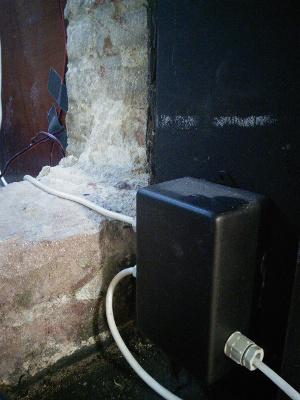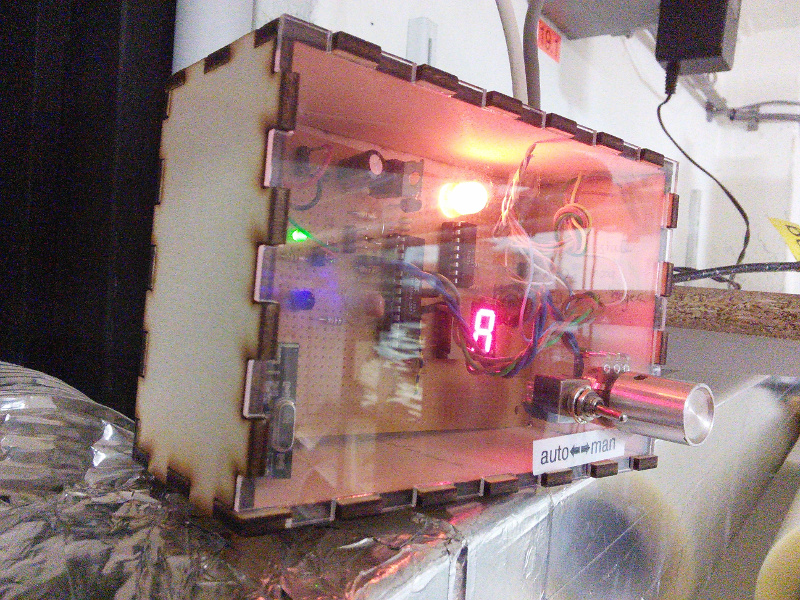Difference between revisions of "Spacesucker"
| Line 5: | Line 5: | ||
|Contact= benadski | |Contact= benadski | ||
}} | }} | ||
| + | |||
| + | === Hardware === | ||
| + | |||
| + | [[File:Fan.jpg|center|The fan]] | ||
| + | The fan is a 230V single phase type. With a regular dimmer it failed to start or was just uncontrollable. On full speed it makes a bit too much noise, so running at full speed is not an option. | ||
| + | |||
| + | |||
| + | [[File:CO2.jpg|center|The CO2 meter]] | ||
| + | The CO2 meter at the space has three LEDs that indicate how much CO2 there is. The yellow LED lights at 1200ppm, the red at 1600ppm. | ||
| + | |||
| + | |||
| + | [[File:Dimmer.jpg|center|The motor dimmer]] | ||
| + | The dimmer is built around a U2008 chip which is connected to the microcontroller via an optocoupler. It accepts PWM from the microcontroller. The PWM frequency is fairly low, the opto is a cheap and slow one. But it does not matter much, on the dimmer side there is enough filtering to get a stable analog voltage for the dimmer chip. | ||
| + | |||
| + | |||
| + | [[File:SuckSystem.jpg|center|The microcontrolled system]] | ||
| + | The microcontroller system: The ATmega88 controller has plenty of flash memory for driving the LED display, reading CO2, switch and spacestate inputs, reading out the potentiometers, driving the dimmer with PWM and sending messages through the air. | ||
| + | |||
| + | |||
| + | |||
| + | == MORE SOON == | ||
Revision as of 21:22, 1 June 2014
Spacesucker (CO2 removal tool)
| Project Spacesucker | |
|---|---|
| Status | Completed |
| Contact | benadski |
| Last Update | 2014-06-01 |
Hardware
The fan is a 230V single phase type. With a regular dimmer it failed to start or was just uncontrollable. On full speed it makes a bit too much noise, so running at full speed is not an option.
The CO2 meter at the space has three LEDs that indicate how much CO2 there is. The yellow LED lights at 1200ppm, the red at 1600ppm.
The dimmer is built around a U2008 chip which is connected to the microcontroller via an optocoupler. It accepts PWM from the microcontroller. The PWM frequency is fairly low, the opto is a cheap and slow one. But it does not matter much, on the dimmer side there is enough filtering to get a stable analog voltage for the dimmer chip.
The microcontroller system: The ATmega88 controller has plenty of flash memory for driving the LED display, reading CO2, switch and spacestate inputs, reading out the potentiometers, driving the dimmer with PWM and sending messages through the air.



